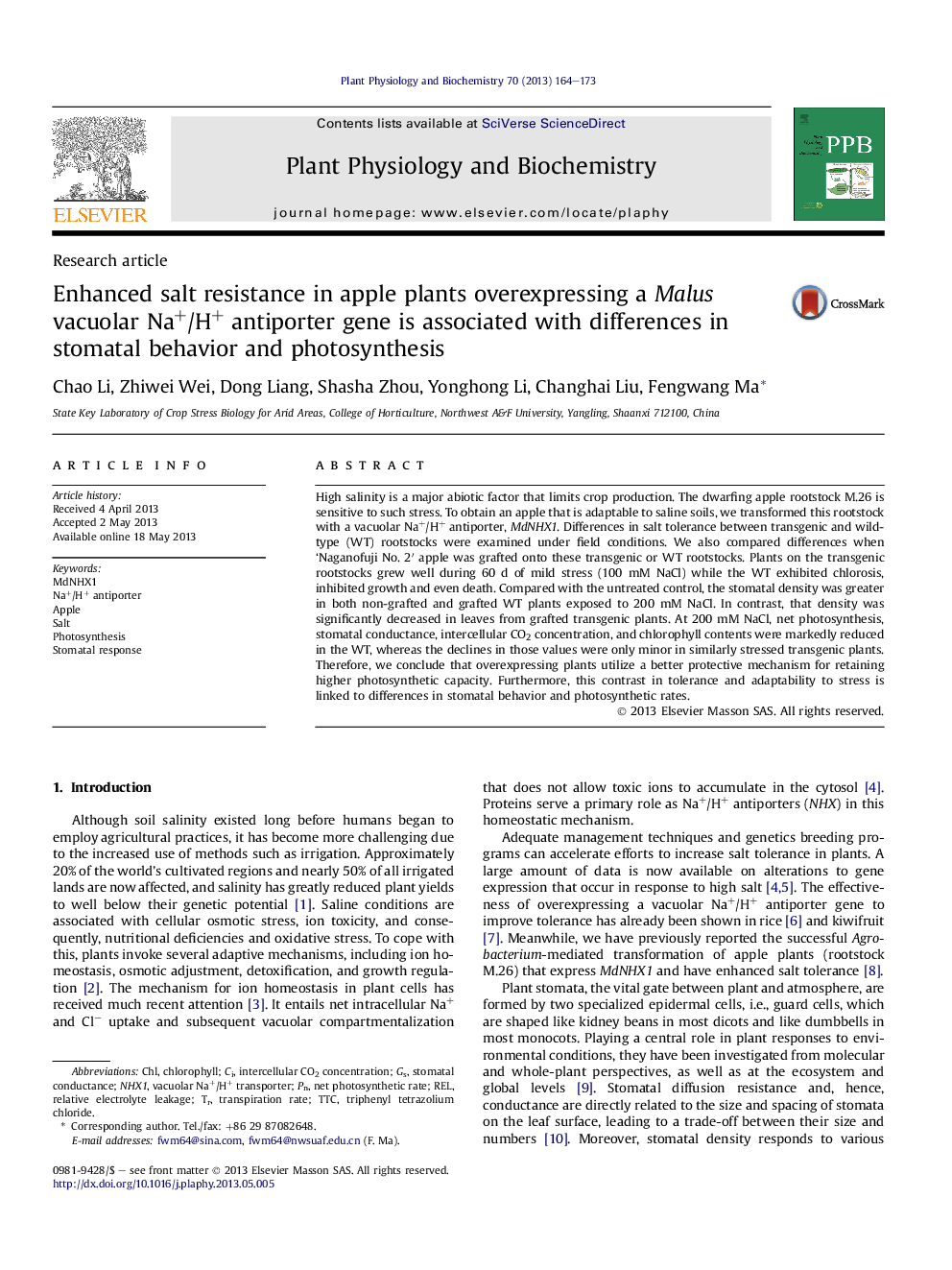| Article ID | Journal | Published Year | Pages | File Type |
|---|---|---|---|---|
| 8355542 | Plant Physiology and Biochemistry | 2013 | 10 Pages |
Abstract
High salinity is a major abiotic factor that limits crop production. The dwarfing apple rootstock M.26 is sensitive to such stress. To obtain an apple that is adaptable to saline soils, we transformed this rootstock with a vacuolar Na+/H+ antiporter, MdNHX1. Differences in salt tolerance between transgenic and wild-type (WT) rootstocks were examined under field conditions. We also compared differences when 'Naganofuji No. 2â² apple was grafted onto these transgenic or WT rootstocks. Plants on the transgenic rootstocks grew well during 60Â d of mild stress (100Â mM NaCl) while the WT exhibited chlorosis, inhibited growth and even death. Compared with the untreated control, the stomatal density was greater in both non-grafted and grafted WT plants exposed to 200Â mM NaCl. In contrast, that density was significantly decreased in leaves from grafted transgenic plants. At 200Â mM NaCl, net photosynthesis, stomatal conductance, intercellular CO2 concentration, and chlorophyll contents were markedly reduced in the WT, whereas the declines in those values were only minor in similarly stressed transgenic plants. Therefore, we conclude that overexpressing plants utilize a better protective mechanism for retaining higher photosynthetic capacity. Furthermore, this contrast in tolerance and adaptability to stress is linked to differences in stomatal behavior and photosynthetic rates.
Keywords
Related Topics
Life Sciences
Agricultural and Biological Sciences
Plant Science
Authors
Chao Li, Zhiwei Wei, Dong Liang, Shasha Zhou, Yonghong Li, Changhai Liu, Fengwang Ma,
